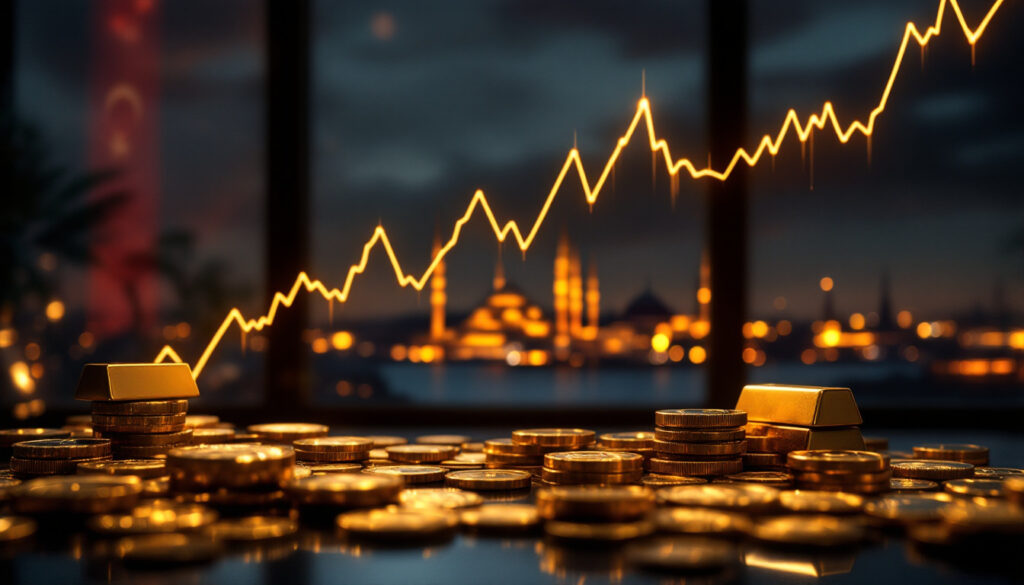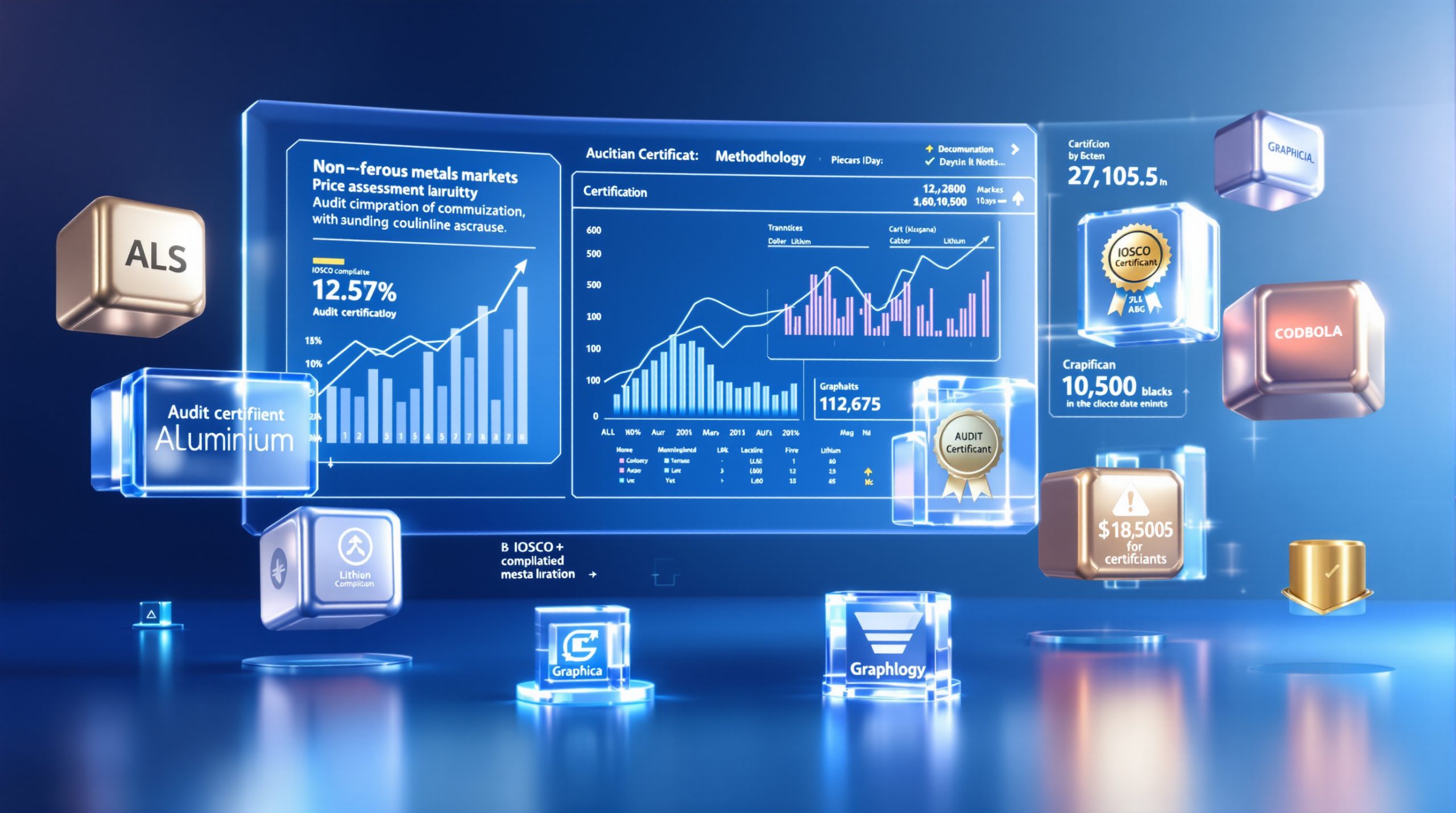Understanding Turkish Gold Contracts Premium Phenomenon
The Record Premium Gap in Turkish Gold Trading
Turkish gold certificates on Borsa Istanbul reached a record 21% premium over physical gold in April 2025, marking an unprecedented divergence between digital and physical gold markets. This premium represents the substantial price difference between digital certificates and the 0.01 grams of physical bullion they represent, highlighting significant market inefficiency.
The surge in investor interest began in early March 2025, according to Gedik Yatirim AS research analyst Burak Pirlanta, who noted that "global trade tensions created a flight to safety that Turkey's digital gold market was uniquely positioned to capture." Trading volume increased 38% month-over-month in March alone, demonstrating remarkable momentum.
Global trade tensions have been cited as the primary driver pushing gold prices higher, with Turkish investors particularly sensitive to geopolitical uncertainty. Current gold market analysis indicates the premium gap widened steadily throughout March before reaching its peak in April, indicating a sustained rather than speculative investor movement.
Why Are Turkish Investors Flocking to Gold?
Turkey has a deep-rooted historical preference for gold as a store of value, with gold representing approximately 15-20% of the average Turkish household's savings portfolio. This cultural affinity for gold stems back centuries, with many families passing down physical gold through generations as a form of wealth preservation.
Digital gold certificates have revolutionized this traditional market by providing easier access compared to physical bullion. As Pirlanta observes, "The certificate market's liquidity advantages are reshaping Turkey's gold investment landscape." In Q1 2025 alone, approximately 450,000 new gold trading accounts were opened across Turkish financial institutions.
The current market demand is significantly outpacing available supply on the exchange, creating the conditions for premium pricing. Certificate holders avoid typical barriers to physical gold ownership such as storage costs, security concerns, and purity verification issues.
Turkey's ongoing economic uncertainty has further accelerated this trend, with many investors viewing gold as a hedge against currency volatility and inflation pressures. The combination of digital accessibility and traditional trust in gold has created perfect conditions for the current premium environment.
How Turkish Gold Certificates Work
Each Turkish gold certificate represents ownership of precisely 0.01 grams of physical gold, allowing for small-denomination investments that would be impractical with physical bullion. Theoretically, certificate prices should closely track physical gold prices, but the current premium indicates significant market inefficiency.
Trading occurs exclusively on the Borsa Istanbul exchange through an electronic platform enabling near-continuous transactions. This contrasts with physical gold's more opaque over-the-counter market structure. The exchange guarantees that physical gold backing the certificates is stored in secure vaults with regular auditing.
Certificates offer substantial liquidity advantages over physical gold, with immediate buying and selling capability during market hours without the logistical challenges of physical delivery. Settlement occurs electronically through investors' brokerage accounts, eliminating transport, storage, and security concerns.
The 0.01-gram denomination creates micro-investment opportunities particularly attractive to retail investors who might otherwise be priced out of meaningful gold ownership positions. This democratization of gold investment has contributed significantly to the current turkish gold contracts trade at huge premiums.
Factors Driving the Premium Gap
The supply-demand imbalance in the Turkish market represents the most immediate driver of premium pricing. While physical gold supplies remain relatively constrained, digital certificate issuance hasn't kept pace with exploding investor demand.
Investor psychology and herd behavior are playing crucial roles, with momentum trading amplifying price movements beyond fundamentals. The visibility of rising certificate prices has created a self-reinforcing cycle attracting new investors seeking quick returns rather than traditional gold ownership benefits.
The accessibility of digital instruments versus physical gold has transformed market dynamics. While acquiring physical gold involves visiting dealers, verifying authenticity, arranging secure storage, and accepting potential liquidity constraints, certificates can be purchased instantly through existing brokerage accounts.
Storage and security advantages of certificates provide additional appeal, as investors avoid the risks and costs associated with physical gold custody. This convenience premium has become increasingly valued in an uncertain economic environment where immediate liquidity may be prioritized.
Market Implications for Investors
The current situation presents clear arbitrage opportunities between physical and certificate markets for sophisticated investors with access to both channels. The 21% premium gap theoretically allows for simultaneous physical gold purchase and certificate shorting, though practical constraints limit the execution of perfect arbitrage.
Investors must recognize the risk of premium collapse when market sentiment shifts, as historical episodes suggest premiums typically normalize within 6 months, according to Pirlanta's analysis. Purchasers at peak premium levels face potential capital loss even if underlying gold prices remain stable.
Global gold ETF premiums provide useful comparison points, with Turkish premiums currently exceeding typical international premium/discount ranges by approximately 17 percentage points. This extreme divergence suggests mean reversion pressure will likely build over time.
Strategic approaches for navigating the premium environment include dollar-cost averaging to reduce timing risk, maintaining diversified exposure across physical and digital gold instruments, and establishing clear exit parameters before entering positions. Understanding these gold performance challenges is essential for investors in this market.
Historical Context of Gold Investment in Turkey
Gold has traditionally played a central role in Turkish savings culture, particularly for weddings, where gifts of physical gold remain customary. This cultural foundation underpins modern financial innovations like gold certificates, combining tradition with technological accessibility.
Previous premium episodes have occurred during periods of economic stress, though none reached the magnitude of the current divergence. Historical patterns suggest premiums typically collapse either gradually through arbitrage or abruptly during market corrections.
When compared with other emerging market gold trading patterns, Turkey's premium stands out as particularly extreme. While countries like India and China also demonstrate strong cultural affinity for gold, their markets have generally maintained tighter alignment between physical and digital pricing.
Cultural factors influencing gold demand in Turkey include not only traditional savings preferences but also widespread skepticism toward conventional banking products. This distrust creates fertile ground for alternative investments perceived as having intrinsic value independent of institutional stability.
Expert Analysis and Future Outlook
What Do Market Experts Predict?
Market analysts remain divided on the sustainability of current premium levels. Burak Pirlanta of Gedik Yatirim AS warns: "This premium level suggests market distortion – history shows such gaps rarely sustain beyond 6 months." Others argue the unique combination of global uncertainty and domestic economic concerns could extend the premium cycle.
Potential regulatory responses to market inefficiency may include increased certificate issuance authorization, streamlined physical gold import procedures, or intervention to reduce speculation. The Capital Markets Board (CMB) has reportedly begun monitoring the situation but has yet to announce specific actions.
The premium environment will likely impact Turkish gold imports and reserves, potentially encouraging increased official sector purchases to facilitate certificate issuance expansion. Turkey's current account deficit, historically sensitive to gold import volumes, bears watching as premium-driven demand affects trade balances.
Correlation with broader economic indicators suggests the premium may function as a sentiment barometer for economic uncertainty. If historical patterns hold, premium contraction could signal improving confidence in conventional financial assets and economic stability. For a broader perspective, global commodities insights can provide additional context.
Investment Strategies During Premium Periods
Risk assessment for new certificate buyers must account for both underlying gold price volatility and independent premium fluctuation risk. Investors purchasing at peak premiums face significant downside even in stable gold price environments should the premium normalize.
Physical gold acquisition alternatives merit consideration for those seeking gold exposure without premium risk. While less convenient, direct physical ownership eliminates premium exposure and may offer relative value during extreme premium periods.
Timing considerations for entering and exiting positions become particularly critical during premium anomalies. Technical analysis of both absolute prices and relative premium levels may provide entry/exit guidance, though market psychology often overrides traditional indicators during such periods.
Portfolio allocation recommendations typically suggest limiting premium-priced certificate exposure to a small percentage of overall gold holdings. Diversification across physical gold, international gold ETFs, and gold mining equities provides broader exposure with reduced premium risk concentration.
Global Comparison of Gold Trading Premiums
The current Turkish premium dramatically exceeds typical premiums observed in other markets, where gold ETFs and similar instruments rarely diverge more than 2-3% from underlying metal values. This extreme divergence highlights the unique nature of Turkey's gold certificate market structure.
Similar phenomena in other emerging economies typically occur during periods of capital controls, currency crises, or physical gold supply disruptions. Vietnam experienced meaningful premiums during its 2011 financial turbulence, though at lower levels than Turkey's current situation.
Historical precedents from global markets suggest premium normalization occurs through three primary mechanisms: increased supply, decreased demand, or arbitrage activity. The speed of normalization typically correlates with market liquidity and regulatory flexibility.
Lessons from previous premium correction events emphasize the importance of position sizing and time horizon. Long-term gold investors can often ride out premium volatility, while short-term speculators face significant timing risk during premium normalization phases.
Technical Analysis of Gold Certificate Trading
Volume trends on Borsa Istanbul show certificate trading reaching unprecedented levels, with daily trading volumes tripling year-over-year. This exponential growth in transaction activity indicates widespread market participation beyond traditional gold investors.
Price support and resistance levels appear less reliable during premium extremes, as traditional technical indicators designed for efficiently priced markets may not account for sentiment-driven premium components. However, technical analysts have identified key psychological price points where profit-taking increases.
Trading pattern analysis reveals increased volatility during foreign market trading hours, suggesting international events disproportionately impact certificate pricing compared to local factors. Overnight price gaps have become increasingly common as international developments affect next-day sentiment.
Volatility metrics for certificates have consistently exceeded physical gold metrics, creating options pricing discrepancies that sophisticated investors have begun exploiting. Implied volatility in certificate-based derivatives suggests the market anticipates continued price instability. These factors are crucial to consider when developing gold ETF strategies.
FAQ: Turkish Gold Contracts and Premiums
What causes gold certificate premiums in Turkey?
Supply-demand imbalance represents the primary driver, with investor demand growing faster than certificate issuance capacity. The exchange's ability to create new certificates depends on physical gold procurement, creating bottlenecks during demand surges.
Market accessibility issues contribute to premium persistence, as physical gold market friction creates barriers to effective arbitrage. Unlike perfectly efficient markets where arbitrage quickly eliminates price discrepancies, practical constraints like import restrictions and physical logistics slow normalization.
Investor sentiment and behavioral economics play crucial roles, with momentum investing and fear-of-missing-out psychology amplifying price movements beyond fundamental justifications. The visibility of rising certificate prices creates self-reinforcing demand patterns.
Structural market inefficiencies, including limited short-selling capabilities, restricted arbitrage channels, and periodic trading halts, prevent full market efficiency. These structural factors allow premiums to develop and persist beyond what fully efficient markets would permit.
How can investors protect themselves from premium collapse?
Diversification strategies across both premium-exposed and non-premium gold investments provide the most straightforward protection. Limiting certificate allocation to a manageable percentage of overall gold exposure reduces concentration risk.
Premium monitoring techniques, including tracking the historical premium range and establishing personal thresholds for entry/exit, help investors maintain discipline during emotional market periods. Setting automated alerts for significant premium changes supports consistent decision-making.
Risk management approaches such as staggered entry and exit, predetermined position sizing, and clear loss thresholds help investors navigate premium volatility. Many advisors recommend investing no more than 30% of intended gold allocation in premium-exposed certificates.
Alternative gold investment vehicles without premium exposure, including international ETFs, gold mining shares, and direct physical ownership, provide diversification benefits. These alternatives may underperform during premium expansion but offer protection during normalization phases. Investors should also consider the 2025 gold outlook when making these decisions.
Are gold certificates regulated differently than physical gold in Turkey?
The regulatory framework for certificates falls under capital markets regulations, while physical gold trading operates under precious metals exchange rules. This regulatory division creates different compliance requirements and investor protection mechanisms.
Investor protections for certificates include exchange guarantees of underlying physical gold, segregated custody requirements, and regular auditing of vault holdings. Physical gold transactions typically offer fewer standardized protections, with quality and authenticity verification remaining buyer responsibilities.
Taxation differences between certificates and physical gold impact overall investment returns. While certificate transactions generate documented audit trails subject to capital gains reporting, physical gold transactions may involve less transparent tax treatment.
Reporting requirements for certificate holdings include periodic disclosure to tax authorities, while physical gold holdings generally carry fewer automatic reporting obligations. This reporting distinction influences investor preference based on privacy considerations and tax planning strategies.
How do Turkish gold premiums compare historically?
Previous premium cycles have never reached the current 21% level, with historical episodes typically peaking between 5-10% during periods of economic stress. The unprecedented magnitude of the current premium reflects unique market conditions combining global and local factors.
Duration of past premium periods suggests normalization typically occurs within 3-6 months, though extended premiums have occasionally persisted during prolonged economic uncertainty. The current turkish gold contracts trade at huge premiums has already exceeded typical duration metrics.
Magnitude comparison with historical episodes highlights the extraordinary nature of the current situation. Even during Turkey's 2018 currency crisis, certificate premiums peaked around 12%, substantially below current levels.
Resolution patterns from past episodes generally follow predictable trajectories, beginning with premium stagnation, followed by gradual compression as arbitrage increases, and ultimately returning to typical trading ranges of 1-3%. Investor recognition of these patterns can inform strategic planning for the current cycle.
Want to Discover the Next Major ASX Mining Opportunity?
Stay ahead of the market with Discovery Alert's proprietary Discovery IQ model, delivering instant notifications on significant mineral discoveries across the ASX. Visit the discoveries page to see how early identification of major mineral finds can lead to exceptional returns for savvy investors.




